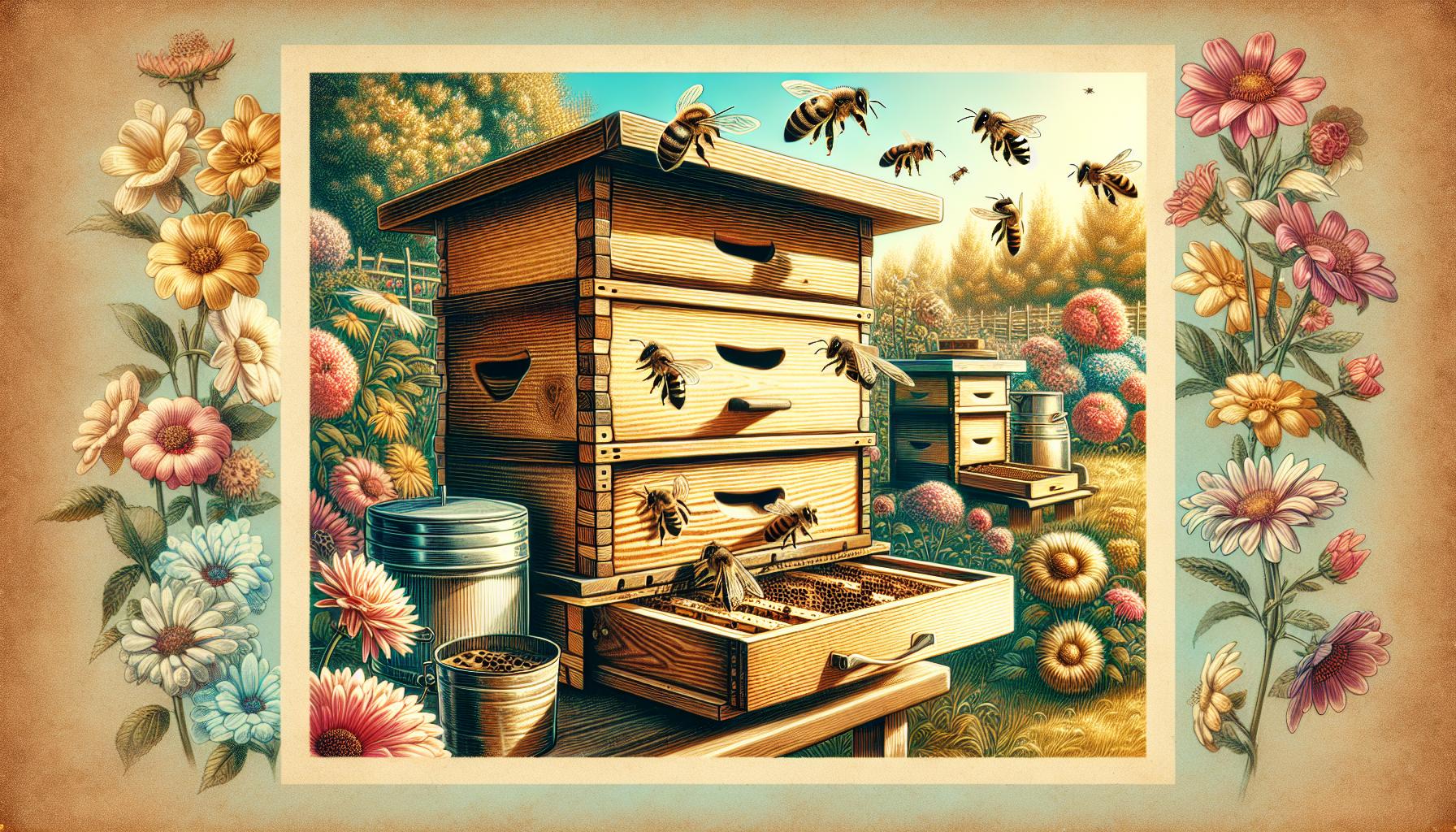
Essential Bee Hive Parts Every Beekeeper Must Know for Healthy Colonies
Beekeeping is a fascinating combination of art and science, requiring a deep understanding of a hive's structure and function. A well-maintained hive provides a suitable environment for bees to thrive, contributing to honey production, colony expansion, and overall bee health. This guide explores the fundamental parts of a bee hive, highlighting their roles and significance.
Overview of Bee Hive Parts
A standard bee hive consists of multiple components, each serving a crucial purpose. Proper knowledge of these parts helps beekeepers create a thriving colony and optimize honey production.
1. Brood Box
The brood box, also known as the deep hive body, is where the queen lays her eggs and young bees develop. It contains frames filled with a comb, where eggs, larvae, and pupae reside. This section is vital for colony growth and should be inspected regularly to ensure the queen is healthy and the brood is thriving.
2. Frames
Frames hold the honeycomb, providing structure for bees to build their wax comb and store honey, pollen, and brood. Beekeepers can remove frames for inspection and honey extraction. Wooden or plastic frames with wax or plastic foundations are commonly used.
3. Supers
Supers are additional boxes placed above the brood box, primarily for honey storage. During nectar flows, bees fill these boxes with honey, which can later be harvested. Honey supers should be added when the brood box is full to ensure ample space for honey production.
4. Queen Excluder
A queen excluder is a mesh barrier placed between the brood box and supers. It allows worker bees to pass through while preventing the larger queen from laying eggs in honey storage areas. This ensures the harvested honey remains free of brood.
5. Honey Storage
Honey storage refers to frames within the supers that bees fill with nectar, which they then convert into honey. Proper management of honey storage maximizes yields while maintaining colony health.
6. Entrance Reducer
An entrance reducer is a small device that controls the hive's entrance size. It helps protect the colony from pests and intruders while maintaining proper ventilation and warmth during colder months.
7. Hive Cover
The hive cover shields the colony from environmental elements such as rain, wind, and extreme temperatures. Telescoping covers offer added protection, while migratory covers are ideal for easy transport.
8. Bottom Board
The bottom board serves as the hive’s foundation, supporting the entire structure. It provides ventilation and prevents pests from infiltrating the hive. Solid and screened bottom boards are the two main types used in beekeeping.
Essential Components for Effective Beekeeping
Hive Body
The hive body houses the colony, providing space for the queen and worker bees to carry out essential activities such as egg-laying, honey storage, and hive maintenance. Proper hive body management is crucial for colony health and productivity.
Frames and Foundations
Frames and foundations support wax comb construction, allowing bees to efficiently store resources and rear brood. Well-maintained frames facilitate easier hive inspections and honey extraction.
Hive Cover and Ventilation
Hive covers protect bees from extreme weather conditions. Ventilation is crucial in preventing condensation, which can lead to mold growth and weaken the colony.
Optional Accessories for Hive Optimization
Queen Excluder
A queen excluder prevents the queen from laying eggs in honey supers. Made of plastic or metal, it ensures that honey remains pure and easy to harvest. Proper placement of the queen excluder above the brood box is essential for effective hive management.
Entrance Reducer
The entrance reducer adjusts the hive entrance size, offering protection against predators and robbing bees. It is particularly useful during winter to help bees maintain warmth.
Maintaining Your Bee Hive
Routine maintenance ensures colony health and longevity. Here are key maintenance practices beekeepers should follow:
1. Cleaning Recommendations
-
Remove Old Comb: Scrape off old wax and propolis from frames and supers.
-
Wash Equipment: Use warm, soapy water to clean hive components and remove pathogens.
-
Inspect for Damage: Regularly check for cracks or warping in hive parts.
-
Dry and Store Properly: Store equipment in a dry area to prevent mold and deterioration.
2. Replacing Hive Components
-
Frames: Replace frames every 3-5 years if they become brittle or damaged.
-
Supers: Change supers when they show signs of wear or infestation.
-
Bottom Boards: Replace rotting or damaged bottom boards to ensure ventilation.
-
Hive Covers: Ensure covers remain intact to protect the hive from environmental elements.
-
Queen Excluders: Replace if warped or clogged to maintain honey production efficiency.
Conclusion
Understanding the various components of a bee hive is crucial for successful beekeeping. Each part plays an essential role in colony health and honey production. Proper maintenance and timely replacement of hive components ensure a thriving colony and increased honey yields. By staying informed and proactive, beekeepers can cultivate healthy, productive hives and enjoy a rewarding beekeeping experience.
Frequently Asked Questions
1. What are the essential components of a bee hive?
The primary components include the brood box, frames, supers, queen excluder, hive cover, and bottom board. Each plays a significant role in colony function and honey production.
2. What is the purpose of the brood box?
The brood box is where the queen lays her eggs and young bees develop. It is vital for colony growth and requires regular inspection to ensure a healthy brood cycle.
3. How do frames assist bees in a hive?
Frames provide structure for bees to build comb, store honey, and rear brood. They make hive management and honey extraction easier for beekeepers.
4. What is a queen excluder and why is it important?
A queen excluder prevents the queen from laying eggs in honey supers, ensuring that harvested honey remains uncontaminated by brood.
5. How does an entrance reducer benefit a bee hive?
An entrance reducer controls the hive entrance size, helping to protect against predators and maintain warmth in colder months.



Leave a comment